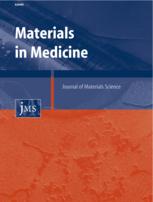
Bioactive glass and autogenous bone as bone substitute material in tibial plateau fracture

Bioactive glass and autogenous bone as bone substitute material in tibial plateau fracture
Bioactive glass granules: a suitable bone substitute material in the operative treatment of depressed lateral tibial plateau fractures: a prospective, randomized 1 year follow-up study
J Mater Sci Mater Med. 2011 Apr;22(4):1073-80. doi: 10.1007/s10856-011-4272-0. Epub 2011 Mar 23Did you know you're eligible to earn 0.5 CME credits for reading this report? Click Here
Synopsis
25 patients with depressed unilateral tibial comminuted plateau fractures were randomized to undergo surgery using either bioglass or autogenous bone, as filler material for the fracture gap, to compare their impact on functional results of patients. Following evaluations over a 12 month period, the results indicated that there were no significant differences between the two groups in clinical, fu...
To view the full content, login to your account,
or start your 30-day FREE Trial today.
FREE TRIAL
LOGIN
Forgot Password?
Explore some of our unlocked ACE Reports below!

Learn about our AI Driven
High Impact Search Feature
Our AI driven High Impact metric calculates the impact an article will have by considering both the publishing journal and the content of the article itself. Built using the latest advances in natural language processing, OE High Impact predicts an article’s future number of citations better than impact factor alone.
Continue



 LOGIN
LOGIN

Join the Conversation
Please Login or Join to leave comments.